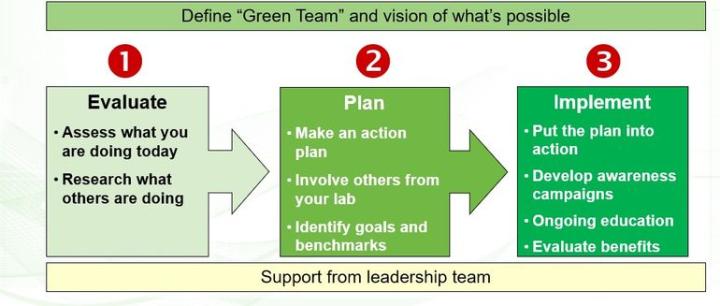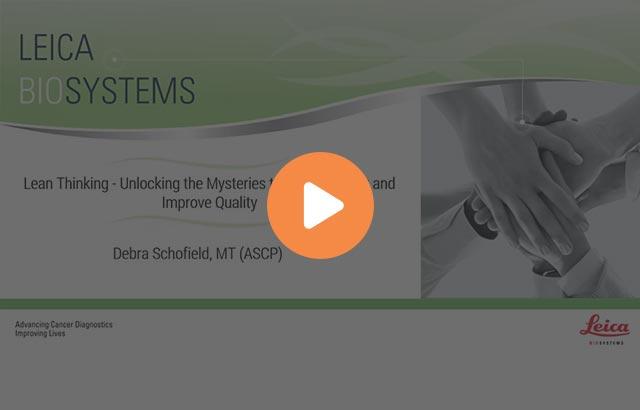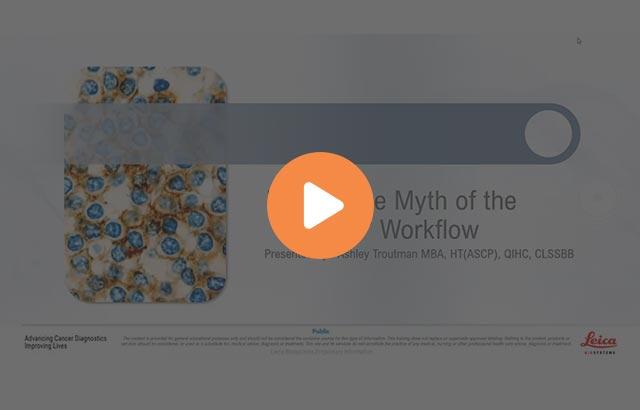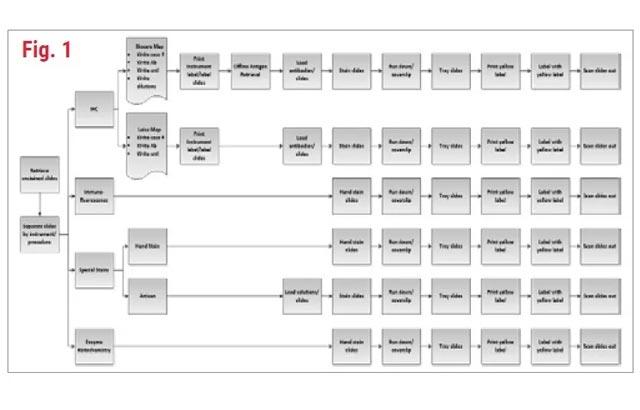
What is Green?

There are as many ideas about being "Green" as there are hues. Simply stated, it is anything that conserves our natural resources while protecting the environment, taking a long view of actions today that impact the future. Impacts are often viewed through the lens commonly referred to as the three pillars of sustainability: environmental, economic, and social.
Sustainability - Why is it Important?
"Everything that we need for our survival and well-being depends, either directly or indirectly, on our natural environment. To pursue sustainability is to create and maintain the conditions under which humans and nature can exist in productive harmony to support present and future generations."1 Sustainability are the "abilities"- responsibility, capability, and equitability to minimize the impact on our people, planet, and economics.
How Can We Practice Sustainability in Histology?
Practicing sustainability in the histology laboratory shapes paradigms in four fundamental ways: minimizing our impact on the Earth, maintaining our well-being, decreasing the cost of waste management in the laboratory, and discovering new processes affecting our daily work. By embodying our community's determination to protect and preserve the environment's natural and economic resources, we become aware of our impacts.
What Types of Actions Can We Take to Make a Laboratory "Green"?
- Recycling
- Water conservation
- Renewable or energy-efficient products
- Efficient processes
- Education
How Laboratories become Aware of Impacts: Greening Histology
Dr. Donella Meadows, an environmental scientist and thought leader on sustainability, used a system thinking perspective to identify interdependencies within systems.2 Evaluating the interwoven picture of the "greater whole" clarifies the greatest significance, indicating what to measure. Dr. Meadows states, "Indicators arise from values (we measure what we care about), and they create values (we care about what we measure)"3. A histology laboratory is a complex system where each step of the process influences and impacts the other parts. Information points, or indicators, act as guideposts when making decisions and planning our actions.3
New types of information must be gathered and shared when setting sustainability goals while developing a roadmap for creating green histology laboratories.

Key Performance Indicators (KPI) determine how to evaluate, plan, implement, measure, and monitor sustainability changes. Some KPIs for the histology laboratory are energy, water, supply, and waste. The ability to raise awareness of current practices that deplete resources creates opportunities for new ways of reducing, reusing, and recycling throughout the histology laboratory. "We must identify and understand the risks to human health and the ecosystem to enjoy a high-quality life."4
How Can the Histology Laboratory be Assessed?
Use a "greening perspective" throughout the histology diagnostic pathway to find minimal impact resources that support the environment in:
- Physical Space
- Grossing
- Processing
- Embedding
- Microtomy
- Staining
- Archiving and storage
발표자 소개

April Schrank‐Hacker, Ed.D., Life Science Marketing Leader at Leica Biosystems, is a clinical laboratory specialist in Cytogenetics having over 30 years of experience in technology, research, innovation, and laboratory management. April earned her BS in Clinical Laboratory Sciences with a specialization in Cytogenetics from Thomas Jefferson University and is certified in cytogenetics through ASCP with the designation CG(ASCP) CM. Her Master’s degree was earned from the University of Pennsylvania in Organizational Dynamics (MSOD) with dual certifications in Organizational Development and Change Studies and Organizational Leadership. April earned her Doctoral degree in Organizational Leadership, where she was a Distinguished Research Fellowship scholar for her work on building high-performing leadership and teams in domains of chaos and complexity. She has coauthored over 30 peer-reviewed publications and posters.

Lawrence Patton brings over 30 years of cancer diagnostic industry experience to his role. Lawrence began his career in the histology lab spending over 10 years at Dianon/Labcorp in Connecticut. Since 2008, Lawrence has held multiple roles at Leica Biosystems and has trained and provided technical advice on advanced staining and core histology to over 1,000 clients in five years. Additionally, he ushered in an industry-first when he researched the topic of “Green Histology” and presented at a variety of histology conferences and symposiums nationwide.
참조 문헌
- Learn About Sustainability. Environmental Protection Agency. Accessed 05March2021. https://www.epa.gov/sustainability/learn-about-sustainability
- Wright, Diana, and Donella H. Meadows. Thinking in Systems: A Primer. Earthscan, 2009.
- Meadows, D. 1998. Indicators and Information Systems for Sustainable Development. The Sustainability Institute, Hartland VT, USA. http://donellameadows.org/wp-content/userfiles/IndicatorsInformation.pdf
- Environmental Protection Agency. A Framework for Sustainability Indicators at EPA. EPA/600/R/12/687. October 2012. www.epa.gov/ord
Related Content
라이카 바이오시스템즈 Knowledge Pathway 콘텐츠는 에서 이용할 수 있는 라이카 바이오시스템즈 웹사이트 이용 약관의 적용을 받습니다. 법적고지. 라이카 바이오시스템즈 웨비나, 교육 프레젠테이션 및 관련 자료는 특별 주제 관련 일반 정보를 제공하지만 의료, 규정 또는 법률 상담으로 제공되지 않으며 해석되어서는 안 됩니다. 관점과 의견은 발표자/저자의 개인 관점과 의견이며 라이카 바이오시스템즈, 그 직원 또는 대행사의 관점이나 의견을 나타내거나 반영하지 않습니다. 제3자 자원 또는 콘텐츠에 대한 액세스를 제공하는 콘텐츠에 포함된 모든 링크는 오직 편의를 위해 제공됩니다.
모든 제품 사용에 다양한 제품 및 장치의 제품 정보 가이드, 부속 문서 및 작동 설명서를 참조해야 합니다.
Copyright © 2024 Leica Biosystems division of Leica Microsystems, Inc. and its Leica Biosystems affiliates. All rights reserved. LEICA and the Leica Logo are registered trademarks of Leica Microsystems IR GmbH.



